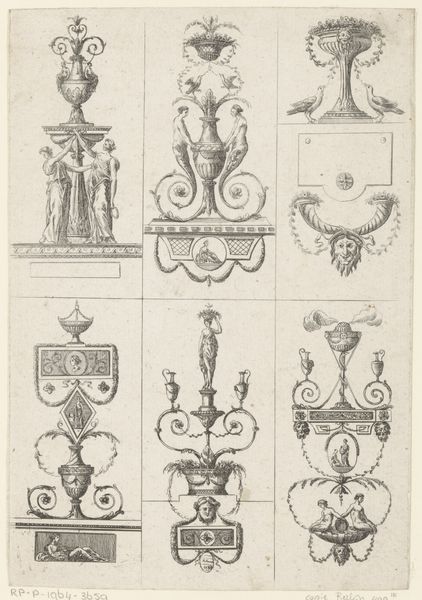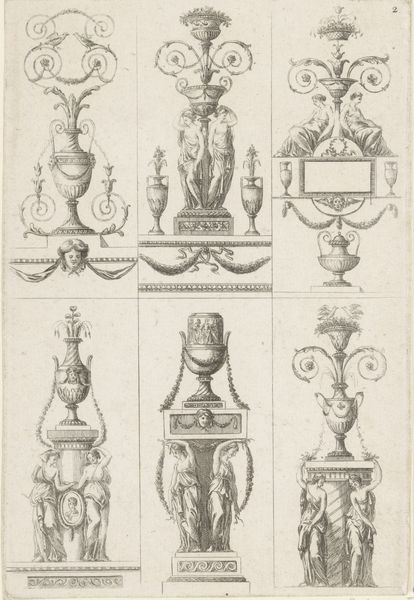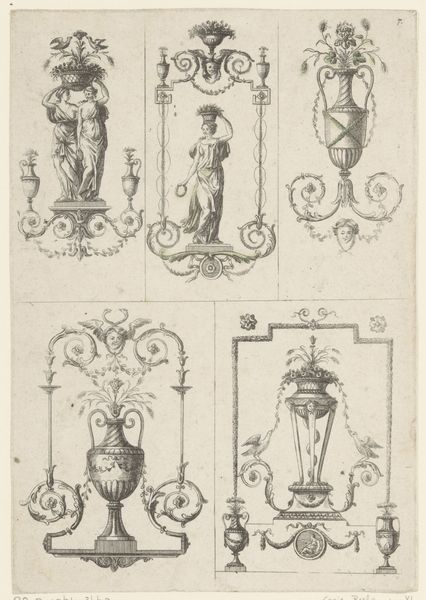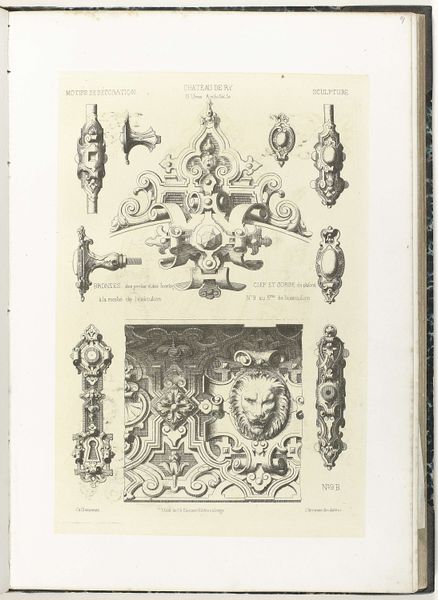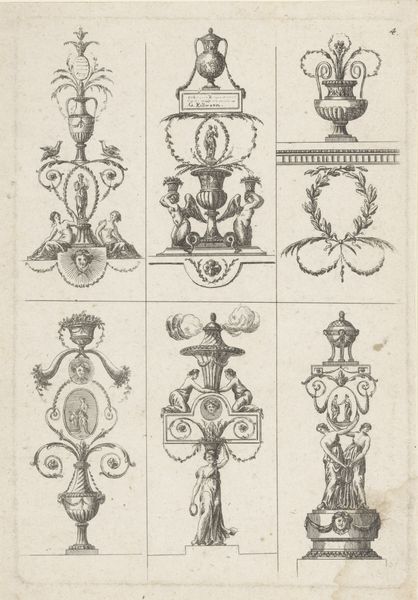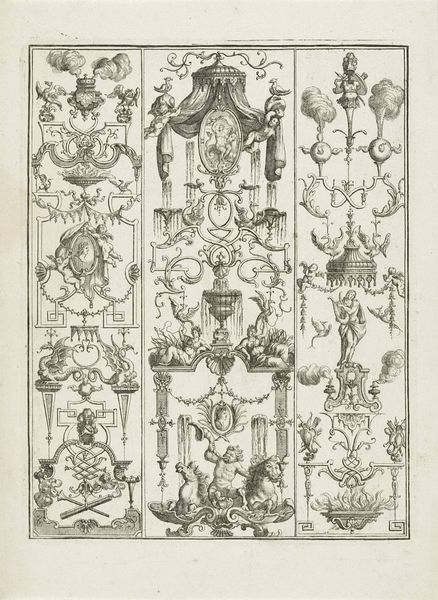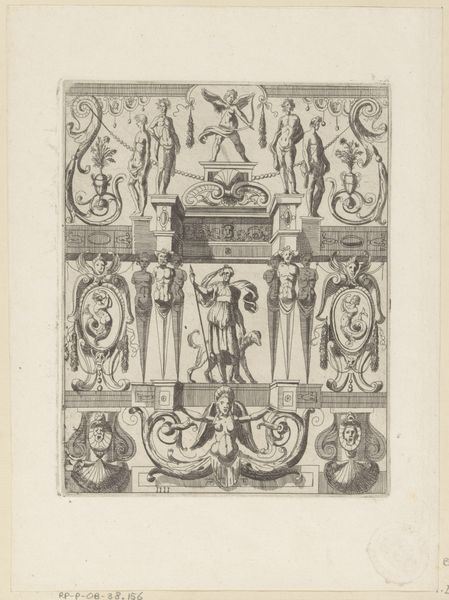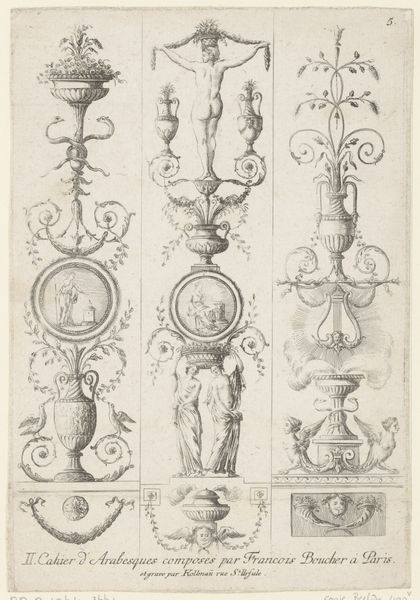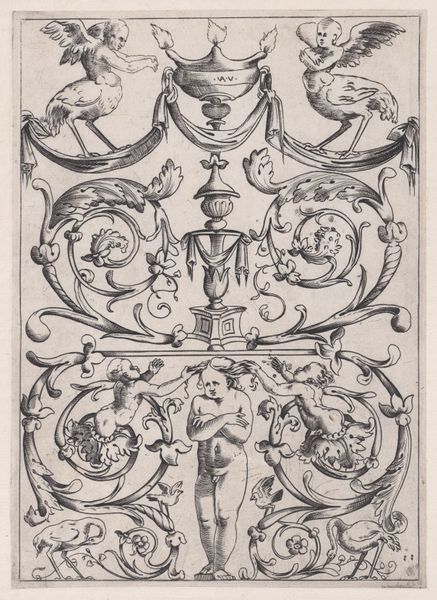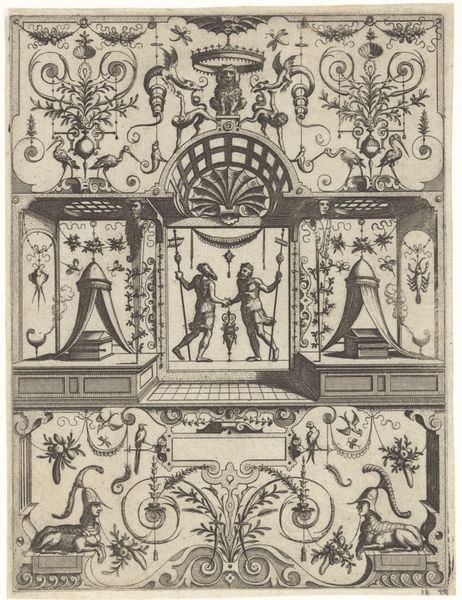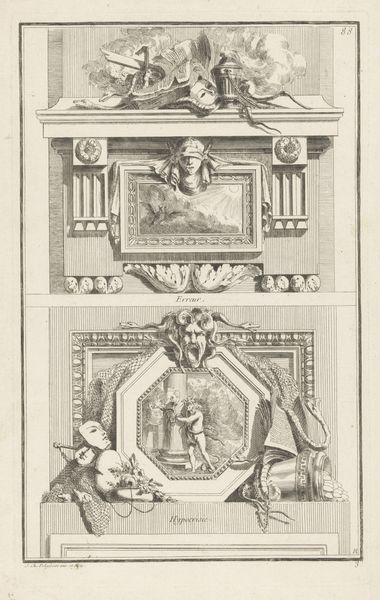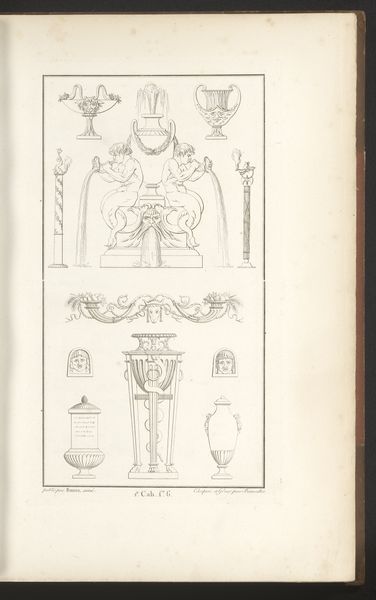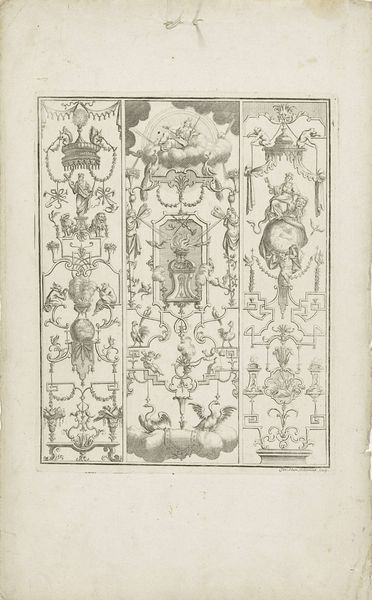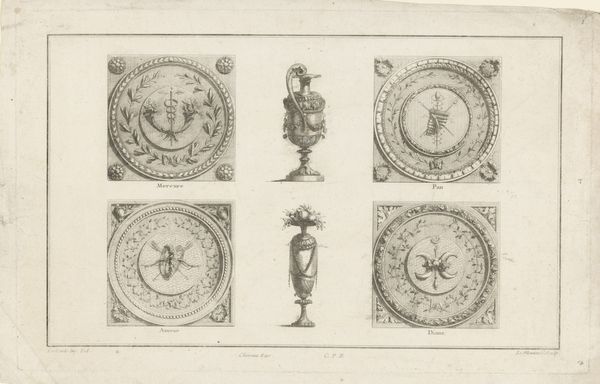
Dimensions: height 222 mm, width 150 mm
Copyright: Rijks Museum: Open Domain
Editor: So, this is "Six Scenes with Arabesques," made between 1746 and 1800. It's an engraving by Kollmann currently at the Rijksmuseum. It looks like a page torn straight from someone's sketchbook, a very elegant sketchbook at that! What jumps out at you? Curator: What leaps to mind is the sheer playful *fantasy*! Can’t you just imagine Kollmann, sipping wine, perhaps, while riffing on these fountains and figurines? The Rococo loved to blur the lines between reality and decoration, between seriousness and a good chuckle. It’s like they’re saying, “Life is short, let's bedazzle everything!" Editor: I see that! All these ornate flourishes—the vases, the little cherubs. Where did this "arabesque" style come from? Curator: Excellent question! "Arabesque," in this context, isn't necessarily about Arabic designs, but more about elaborate, intertwined ornamentation. Think of it as visual poetry—forms blossoming into other forms, creating a sense of boundless invention. Kollmann here isn’t just copying, but almost choreographing a visual dance. Editor: So, it's about freedom and imagination? Curator: Exactly! Notice how each scene is self-contained, a little world of whimsy. It's almost like Kollmann is challenging other artists. Like they’re saying "Top that!" What about you; what story would you create from it? Editor: Maybe a garden where statues come to life at night, and these are glimpses of their secret world! I appreciate that these arabesques are like frameworks for making and creating forms that can also communicate meaning, which, without them, wouldn't be possible to capture! Curator: Beautifully said. It makes me want to dig out my sketchpad!
Comments
No comments
Be the first to comment and join the conversation on the ultimate creative platform.
